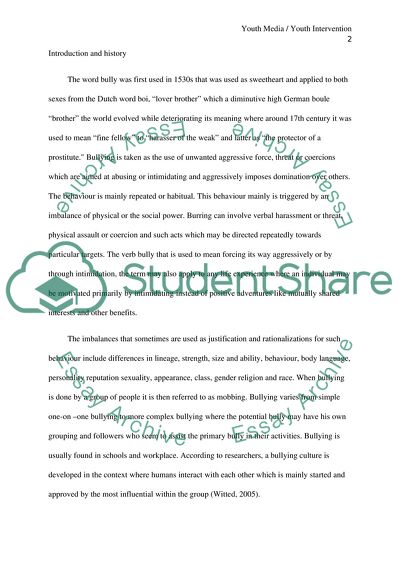Cite this document
(Best Practices for Preventing or Reducing Bullying in Schools Report Example | Topics and Well Written Essays - 2500 words, n.d.)
Best Practices for Preventing or Reducing Bullying in Schools Report Example | Topics and Well Written Essays - 2500 words. https://studentshare.org/social-science/1820562-class-project-youth-media-youth-intervention
Best Practices for Preventing or Reducing Bullying in Schools Report Example | Topics and Well Written Essays - 2500 words. https://studentshare.org/social-science/1820562-class-project-youth-media-youth-intervention
(Best Practices for Preventing or Reducing Bullying in Schools Report Example | Topics and Well Written Essays - 2500 Words)
Best Practices for Preventing or Reducing Bullying in Schools Report Example | Topics and Well Written Essays - 2500 Words. https://studentshare.org/social-science/1820562-class-project-youth-media-youth-intervention.
Best Practices for Preventing or Reducing Bullying in Schools Report Example | Topics and Well Written Essays - 2500 Words. https://studentshare.org/social-science/1820562-class-project-youth-media-youth-intervention.
“Best Practices for Preventing or Reducing Bullying in Schools Report Example | Topics and Well Written Essays - 2500 Words”. https://studentshare.org/social-science/1820562-class-project-youth-media-youth-intervention.


